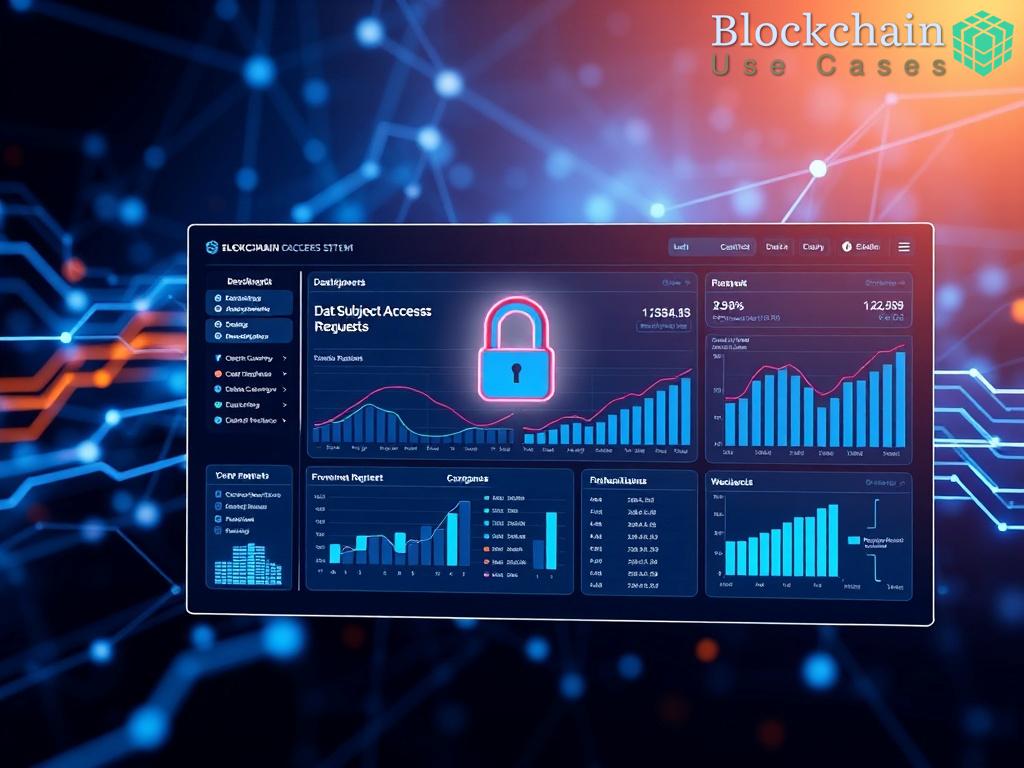The Role of Blockchain in Enhancing Data Security
In the evolving landscape of healthcare, the management of patient records is increasingly under scrutiny. Traditional methods of storing and sharing sensitive health information are often susceptible to data breaches and unauthorized access. Blockchain technology offers a promising solution by providing a decentralized and secure platform for sharing physical therapy and rehabilitation records. This innovative approach not only enhances data security but also fosters trust among patients and healthcare providers.
One of the most significant advantages of blockchain technology is its decentralized nature. Unlike conventional databases that are controlled by a single entity, blockchain operates on a peer-to-peer network where each participant has access to the entire database. This decentralization ensures that no single point of failure exists, making it exceedingly difficult for hackers to corrupt or manipulate data.
Additionally, each transaction on a blockchain is time-stamped and linked to previous entries, creating an immutable record. This characteristic not only enhances transparency but also allows for real-time tracking of data modifications. The table below illustrates the key differences between traditional data management systems and blockchain-based systems:
| Feature | Traditional Systems | Blockchain Systems |
|---|---|---|
| Data Control | Centralized | Decentralized |
| Data Integrity | Vulnerable to Tampering | Immutable Records |
| Access Control | Limited Permissions | Smart Contracts |
| Audit Trails | Difficult to Track | Transparent and Traceable |
The integration of blockchain technology not only secures health records but also empowers patients by giving them ownership of their data. With blockchain, patients can control who accesses their medical information, allowing them to share records with physical therapists or rehabilitation specialists seamlessly. This empowerment is crucial in enhancing patient engagement and ensuring that healthcare providers have accurate and up-to-date information.
Moreover, the use of smart contracts on blockchain platforms can automate the permission process, enabling patients to grant or revoke access to their records at any time. This level of control not only builds patient trust but also ensures compliance with regulatory requirements, such as HIPAA in the United States.
Interoperability Challenges in Rehabilitation Record Sharing
The promise of blockchain technology in revolutionizing the healthcare sector is substantial, particularly in the realm of physical therapy and rehabilitation records. However, as with any transformative technology, challenges exist that must be addressed to fully realize its potential. One of the most pressing issues is interoperability, which plays a crucial role in ensuring that diverse healthcare systems can communicate effectively and share information seamlessly.
Interoperability refers to the ability of different systems, devices, and applications to connect and exchange data effortlessly. In the context of rehabilitation record sharing, this means that various healthcare providers, including physical therapists, specialists, and hospitals, must be able to access and interpret patient data without barriers. Currently, the lack of standardized protocols complicates this process, leading to inefficiencies and potential errors in patient care.
To address these challenges, the development of universal data standards is essential. Blockchain can facilitate this by creating a common framework for data exchange, ensuring that all parties involved in a patient’s care can access relevant information in real-time. The following list highlights key elements that should be standardized to enhance interoperability:
- Data Formats: Uniform data formats ensure that information is presented consistently, making it easier for different systems to read and understand.
- API Development: Robust Application Programming Interfaces (APIs) allow for seamless integration between blockchain networks and existing healthcare systems.
- Data Security Protocols: Establishing security protocols that are universally accepted protects patient information while facilitating sharing.
- Consent Mechanisms: Standardized consent processes empower patients to control who accesses their data, promoting trust and compliance with regulations.
For blockchain solutions to succeed in overcoming interoperability challenges, collaboration among stakeholders is vital. This includes healthcare providers, technology companies, regulatory bodies, and patients. Each of these groups plays a role in defining requirements, developing standards, and advocating for the adoption of blockchain technology.
Furthermore, initiatives such as pilot projects and partnerships between healthcare organizations can serve as testing grounds for interoperability solutions. By sharing best practices and lessons learned, stakeholders can create a cohesive ecosystem that enhances the efficiency and effectiveness of rehabilitation record sharing.
As blockchain technology matures, its capacity to address interoperability challenges will continue to evolve. The potential for creating a secure, decentralized network that connects various healthcare entities offers a pathway to improved patient outcomes in physical therapy and rehabilitation. By ensuring that data is accessible, accurate, and secure, healthcare providers can deliver better, more coordinated care.
In conclusion, tackling interoperability challenges is critical to unlocking the full benefits of blockchain for secure sharing of rehabilitation records. By focusing on standardized protocols, fostering collaboration among stakeholders, and continually innovating, the healthcare industry can pave the way for a more integrated and efficient future.
Patient Privacy and Consent Management on Blockchain
In an era where data breaches and privacy violations are increasingly common, the integration of blockchain technology into healthcare is not just innovative but essential. As we move towards a future where patient data is shared more freely among providers, ensuring that patients maintain control over their personal health information is paramount. Blockchain provides a robust framework for enhancing patient privacy and streamlining consent management, establishing a new standard in the management of sensitive data.
Empowering Patients Through Enhanced Privacy Controls
With blockchain, patients no longer have to worry about unauthorized parties accessing their personal health records. The decentralized nature of blockchain technology creates a secure environment where patient data is encrypted and distributed across a network. This means that even if one part of the network is compromised, the overall integrity of the data remains intact. Patients are given the ability to dictate who can view their information, and they can do so through the use of smart contracts. These contracts automate the consent process, enabling patients to grant or revoke access to their data with a simple action. This level of control not only enhances patient autonomy but also fosters a sense of trust in healthcare providers.
Streamlined Consent Management: A Seamless Experience
Consent management is often seen as a cumbersome process, fraught with paperwork and delays. However, blockchain technology transforms this experience by providing a transparent and efficient mechanism for managing consent. When patients choose to share their records, the blockchain captures the consent in a verifiable manner. This eliminates the need for repetitive consent requests, as each access permission is securely recorded on the blockchain. Furthermore, patients can track who has accessed their data and when, promoting accountability among healthcare providers. As regulations evolve, such as GDPR in Europe and HIPAA in the United States, blockchain’s built-in audit trails will support compliance efforts, ensuring that patient rights are upheld without compromising the speed of care delivery.
In summary, the use of blockchain technology in patient privacy and consent management addresses two of the most pressing issues in healthcare today. By empowering patients with greater control over their data and streamlining the consent process, blockchain not only enhances security but also fosters a collaborative environment between patients and providers. As we continue to explore the potential of blockchain in the sharing of physical therapy and rehabilitation records, it becomes increasingly clear that patient privacy and consent management are critical components of this transformative journey.
Decentralized Access Control for Therapy Records
The advent of blockchain technology is reshaping the landscape of how sensitive health information is managed and shared, particularly in the realm of physical therapy and rehabilitation records. A significant feature of blockchain is its ability to provide decentralized access control, which allows patients and healthcare providers to manage permissions related to sensitive data effectively. This paradigm shift not only enhances security but also fosters a collaborative environment that prioritizes patient autonomy.
Through decentralized access control mechanisms, patients are empowered to determine who can view their therapy records. This level of control is facilitated by smart contracts, which automate the permission process. When a patient decides to share their information with a physical therapist or a rehabilitation specialist, they can do so without the need for cumbersome paperwork or the risk of unauthorized access. By leveraging blockchain’s capabilities, patients can effortlessly grant or revoke access at any time, ensuring that their data remains protected and that their privacy is respected.
Moreover, the transparency inherent in blockchain technology allows patients to track who has accessed their information. This not only builds trust between patients and providers but also creates a culture of accountability within healthcare systems. In the traditional model, patients often have little visibility into who is viewing their medical records, leading to concerns about privacy and data misuse. With decentralized access control, every transaction is securely logged on the blockchain, providing a verifiable audit trail that reinforces patient rights.
In addition to enhancing patient autonomy, decentralized access control offers significant benefits to healthcare providers. By having direct access to accurate, real-time therapy records, practitioners can make well-informed decisions regarding patient care. This improved access translates into better coordination and continuity of care, which is especially crucial in rehabilitation settings where multiple professionals may be involved in a patient’s recovery journey. As a result, healthcare providers can deliver tailored interventions that address the unique needs of each patient, thereby improving overall health outcomes.
Case Studies: Successful Implementation of Blockchain in Physical Therapy
The integration of blockchain technology into physical therapy practices is not just a theoretical concept; it has been successfully operationalized in various healthcare settings. These case studies illustrate how blockchain is revolutionizing the sharing of rehabilitation records, enhancing both data security and patient outcomes. By examining these real-world applications, we can gain insights into the tangible benefits and operational efficiencies that blockchain can bring to the physical therapy landscape.
One notable case study involves a collaborative initiative between a network of rehabilitation clinics and a technology provider specializing in blockchain solutions. This partnership aimed to create a decentralized platform that securely stores and shares patient rehabilitation records. The results were promising; clinics reported a significant reduction in administrative burdens, allowing healthcare professionals to focus more on patient care rather than paperwork. With each therapy session recorded on the blockchain, practitioners could access accurate and real-time data, thereby improving treatment plans and fostering more personalized care.
Another striking example comes from a pilot program implemented in a major urban hospital. Here, the blockchain was used to facilitate communication between different departments involved in a patient’s rehabilitation journey. By creating a unified ledger of all interactions and treatment histories, healthcare providers were able to break down silos that typically hindered coordination. This integration resulted in smoother transitions between physical therapy sessions and other medical services, ultimately enhancing the continuity of care.
The success of these implementations extends beyond operational efficiency; they have profoundly impacted patient autonomy and data security. In both case studies, patients were empowered to control who accessed their rehabilitation records through blockchain’s decentralized access control. This feature significantly increased patient trust, as individuals could monitor all interactions with their data. Furthermore, the encrypted nature of blockchain technology ensured that sensitive health information remained secure from unauthorized access.
As these examples demonstrate, the transition to blockchain-based systems in physical therapy does not merely represent a technological upgrade; it signifies a cultural shift towards greater transparency and collaboration in healthcare. By embracing blockchain, physical therapy practices can not only enhance their operational frameworks but also prioritize the rights and privacy of patients. The evidence is clear: blockchain is a game-changer in the realm of secure sharing of physical therapy and rehabilitation records.


















